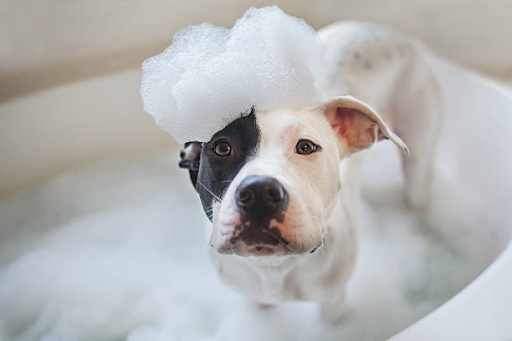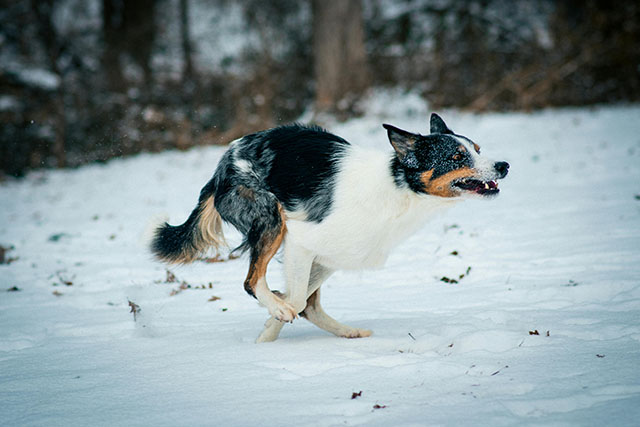It’s true; dog noses really do know! We’ve all heard the saying: “A dog’s nose is their most important sense.” But why is this? What makes a dog’s nose so special, and how does it enable them to interpret their environment in unique ways we cannot?
Interestingly enough, many common issues dogs experience usually begin with an irritated or inflamed nose. From allergies to infections, various afflictions can befall a pup’s precious snout. Thankfully, they can often be treated with relative ease if caught early on — which brings us to the key point here: learning about and understanding your pet’s health needs starts with knowing what constitutes a “normal” nose.
That being said—let’s dive into exploring the complex world of canine olfactory senses!
What are the signs of a nose infection in dogs?
A dog’s nose is a complex and highly sensitive organ, making it susceptible to infections. Knowing the signs of a nose infection is crucial for early intervention and treatment:
- Nasal Discharge: One of the dogs’ most common signs of a nose infection is nasal discharge. If your dog’s nose is secreting thick, discolored mucus or is constantly running, it may be a sign of infection.
- Sneezing and Coughing: Frequent sneezing or coughing can indicate irritation or infection in the nasal passages. Keep an eye on these symptoms, especially if they persist.
- Foul Odor: A foul smell from your dog’s nose is a strong indicator of an infection. Other symptoms like discharge and discomfort often accompany the odor.
- Nasal Congestion: If your dog is having trouble breathing through their nose or is making snorting sounds, it could be due to nasal congestion resulting from an infection.
- Nosebleeds: Occasional nosebleeds are normal, but if they become frequent or severe, they may indicate a more serious issue, such as a nasal infection or injury.
What are common problems with dogs’ noses?
Dogs can face a range of nose-related issues beyond infections. Some of the common problems include:
Dry Nose
Dry, cracked, or flaky noses are fairly common in dogs and can be caused by weather conditions, dehydration, or allergies. Consider using the Natural Dog Company Snout Soother Dog Nose Balm for soothing and moisturizing. This plant-based cream comes in a convenient 2 oz. stick and is specifically formulated to alleviate dry, cracked noses.
Nasal Hyperkeratosis
This condition results in the abnormal growth of nose tissue, leading to crusty, hard, and sometimes painful nose surfaces. Breeds like Bulldogs are more prone to this condition.
Foreign Objects
Dogs are curious creatures and may stick their noses where they shouldn’t. Foreign objects in the nasal passages can cause discomfort, sneezing, and infections.
Tumors and Polyps
Dogs can develop benign or malignant growths in their nasal passages. Symptoms may include persistent nasal discharge, sneezing, and nosebleeds.
Allergies
Similar to humans, dogs can experience allergies that impact their nasal passages. Frequently encountered allergens encompass pollen, dust, and specific food substances. Consider utilizing NaturVet Hemp Allergy Aid Supplement for dogs to promote healthy skin and respiratory well-being. This supplement boasts hemp seed, antioxidants, and beneficial Omegas such as DHA and EPA. With a convenient count of 120, it’s an ideal solution for your furry companion’s needs.
Chronic Nasal Disease
Some dogs develop chronic nasal disease, which can cause recurrent infections in the nose. If your dog has repeated bouts of infection, they may have a chronic condition.
How do you know if your dog’s nose is healthy?
Maintaining a healthy nose in your dog is crucial for their overall well-being. Here’s how to tell if your dog’s nose is in good shape:
- Moist and Cool: A healthy dog’s nose is usually warm. However, it’s essential to note that a warm and dry nose does not necessarily indicate illness.
- No Excessive Discharge: While some clear discharge is normal, excessive or discolored is a sign of a problem.
- No Cracking or Peeling: A dry, cracked, or peeling nose is not indicative of good health. If you observe these signs, it could be attributed to environmental factors or an underlying problem. Shield your dog from excessive sun exposure and consider using My Dog Nose It, a moisturizing sun protection balm for dogs’ noses to safeguard against harmful UVA/UVB rays.
- Normal Breathing: Your dog should be able to breathe comfortably through its nose. If you hear loud snoring or notice congestion, it’s worth investigating.
- No Signs of Discomfort: A healthy dog’s nose should not cause them pain or discomfort. They should not be pawing at their nose or avoiding contact.
How can I treat my dog’s nose infection at home?
If you suspect your dog has a nose viral infection, it’s crucial to consult your veterinarian for a proper diagnosis and treatment plan. However, there are some home care tips you can follow:
- Keep the Area Clean: Clean your dog’s nose with a damp, warm cloth to remove any discharge or debris.
- Humidify the Air: Using a humidifier can help maintain moisture in the air, which can be especially beneficial if your dog’s nose is dry or cracked.
- Offer Plenty of Water: Ensure your dog stays well-hydrated to keep their mucous membranes moist.
- Avoid Irritants: Keep your dog away from smoke, strong odors, and other irritants that can worsen their condition.
- Administer Medication as Directed: If your vet prescribes medication, follow their instructions carefully and complete the full course of treatment.
What is special about a dog’s nose?
A dog’s nose is truly remarkable and sets them apart from many other animals in several ways:
- Superior Sense of Smell: A dog’s olfactory system is incredibly developed, allowing them to detect scents at levels undetectable by humans. They use their noses for tracking, hunting, and even identifying health issues in other animals or humans.
- Unique Nose Prints: Just like humans have unique fingerprints, dogs have a distinct nose prints. No two dogs’ noses are identical, making them even more special and identifiable.
- Cooling Mechanism: Dogs don’t sweat like humans; they cool down by panting and through the sweat glands on their noses and paw pads.
- Emotional Signals: Dogs use their noses to communicate with other dogs and humans. Sniffing can convey curiosity, affection, or even fear.
- Resilience: A dog’s nose is incredibly resilient and can heal quickly, even from injuries. This resilience is vital, given their propensity for exploring the world with their noses. Check out this video and prepare to be amazed by just how powerful your dog’s nose is!
Your dog’s nose is a remarkable and important part of their physiology. Understanding the signs of nose issues and maintaining a healthy nose is essential for your pet’s overall well-being.
If you suspect any problems with your dog’s nose, consult your veterinarian for the best action. With proper care and attention, you can ensure that your furry friend’s nose remains top-notch, helping them navigate the world easily and joyfully.
Jessica is a veterinary medicine student who is passionate about animals. Living with her cherished dog, Milo, deepens her understanding of the human-animal connection, enhancing her empathy as a future veterinarian.
Jessica’s concise articles reflect her dedication to improving the lives of animals and those who care for them, making her an inspiring figure in the pet care field.







